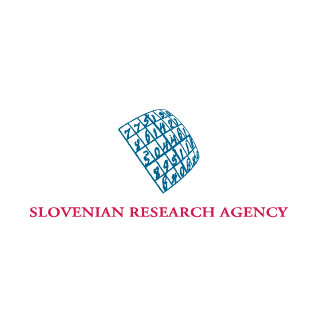Projects
Biotechnological Hub of the NIB (BTH-NIB)
The purpose of the investment project BTH-NIB is the assurance of the appropriate infrastructural conditions for the use of research and developmental opportunities in the fields of operation of the NIB.
Play Video About project Publication
Microwave Catalysis and Chemical Carcinogenesis
Project coordinator: dr. Urban Bren, UM FKKT
Coordinator for NIB: prof. dr. Metka Filipič
Code: J1-5448
Duration: 1.8.2013 - 31.7.2016
Abstract
Research proposal concerns food safety with emphasis on chemical carcinogens that are present either in raw or in thermally processed foods. A variety of computer simulation techniques will be used to elucidate the physicochemical basis of high reactivity and related carcinogenicity of chemical carcinogens. DNA catalysis through preorganized electrostatics of its microenvironment provides a plausible explanation. In addition, reactions between chemical carcinogens and polyphenols – natural scavengers of chemical carcinogens abundant in fruits – will be studied from first principles. The underlying concept is that, in order to prevent DNA damage, chemical carcinogen has to react faster with its scavenger than with DNA. Since activation free energy presents a direct measure of reactivity, free-energy barrier for the reaction of chemical carcinogen with its scavenger has to be lower than for the competing reaction with DNA. Our long-term goal is to find an effective natural scavenger of chemical carcinogens which, after subsequent optimization, could serve as food supplement. We believe that such studies will contribute much towards prevention of cancer – a very relevant field that is nowadays unjustifiably overlooked. Moreover, since microwaves are reported to catalyze a variety of chemical reactions, we are concerned with microwave enhanced reactivity of chemical carcinogens. Because microwave irradiation emitted from various sources including mobile telephony, microwave appliances, satellites, and radars represents a large portion of the electromagnetic smog, this question should be urgently addressed. Therefore, reactions between chemical carcinogens and DNA will be modeled in the context of our recently proposed physical mechanism of microwave catalysis based on rotationally excited polar reactive species. If microwaves are shown to catalyze DNA damage by chemical carcinogens, it is easy to envision that adverse health effects leading to development of cancer will ensue. Current microwave irradiation exposure limits based exclusively on equilibrium tissue heating may, consequently, need to be reconsidered. Finally, microwave radiation is also reported to enhance protein folding and aggregation, which has been generally associated with Alzheimer’s, Parkinson’s, Huntington’s, and Creutzfeld-Jakob diseases as well as with certain types of cancer. Rotationally excited polar water molecules again provide a plausible explanation, because they are expected to significantly disrupt the hydrogen-bond network around a given protein and, consequently, to hinder its hydration. Such a protein would then be forced to compensate for the lost interactions by interacting more potently with itself as well as with adjacent proteins and thereby enhancing the process of aberrant protein folding and aggregation. In the proposed research project we will seek to verify this hypothesis using molecular dynamics simulations in conjunction with in-house Split Integration Symplectic Method, which is able to effectively decouple rotational, translational, and vibrational degrees of freedom of water molecules.
Significance for science
The proposed research project mainly concerns Health Implications (cancer) and Food Safety (in the context of chemical carcinogens that are present either in raw or in thermally processed foods) – both represent the first-priority research fields of the Research and Development Resolution of Republic of Slovenia. Our goal is to advance a novel area of research called Computational Carcinogenesis by taking the already developed and validated simulation methods from Computational Enzymology and applying them to urgent problems related to Toxicology and Carcinogenesis. This scientific field with great potential is unfortunately nonexistent in Slovenia and relatively empty throughout the World. It craves for the organization of an international scientific meeting or for the release of a new scientific journal. Simultaneously, we intend to elucidate the physical mechanism of microwave catalysis, which remains poorly understood despite much speculation in the scientific literature. The results of our work will be published in high ranking journals and presented at international scientific conferences. Open access journals would also be considered due to their extended outreach. To conclude with, we would like to point out that both the Principle Investigator and his proposed research project Chemical Carcinogenesis – A Computational Approach have been evaluated above the quality threshold in the first phase of the demanding European Research Council 2011 Starting Grant Call as well as that the Principle Investigator was in a worldwide competition selected as one of the thirteen young scientists contributing most to the research of Planetary Emergencies and was in 2011 awarded the prestigious Best Fellow Prize of the World Federation of Scientists.


 Scope of NIB's accreditation is given in the Annex to the accreditation certificate and in the List of accredited methods for detection of GMOs and microorganisms – plant pathogens
Scope of NIB's accreditation is given in the Annex to the accreditation certificate and in the List of accredited methods for detection of GMOs and microorganisms – plant pathogens Holder of National Standard in the Field of Amount of Substance/Bioanalysis of Nucleic Acids/GMOs and Microorganisms
© 2023- National institute of biology, all rights reserved

